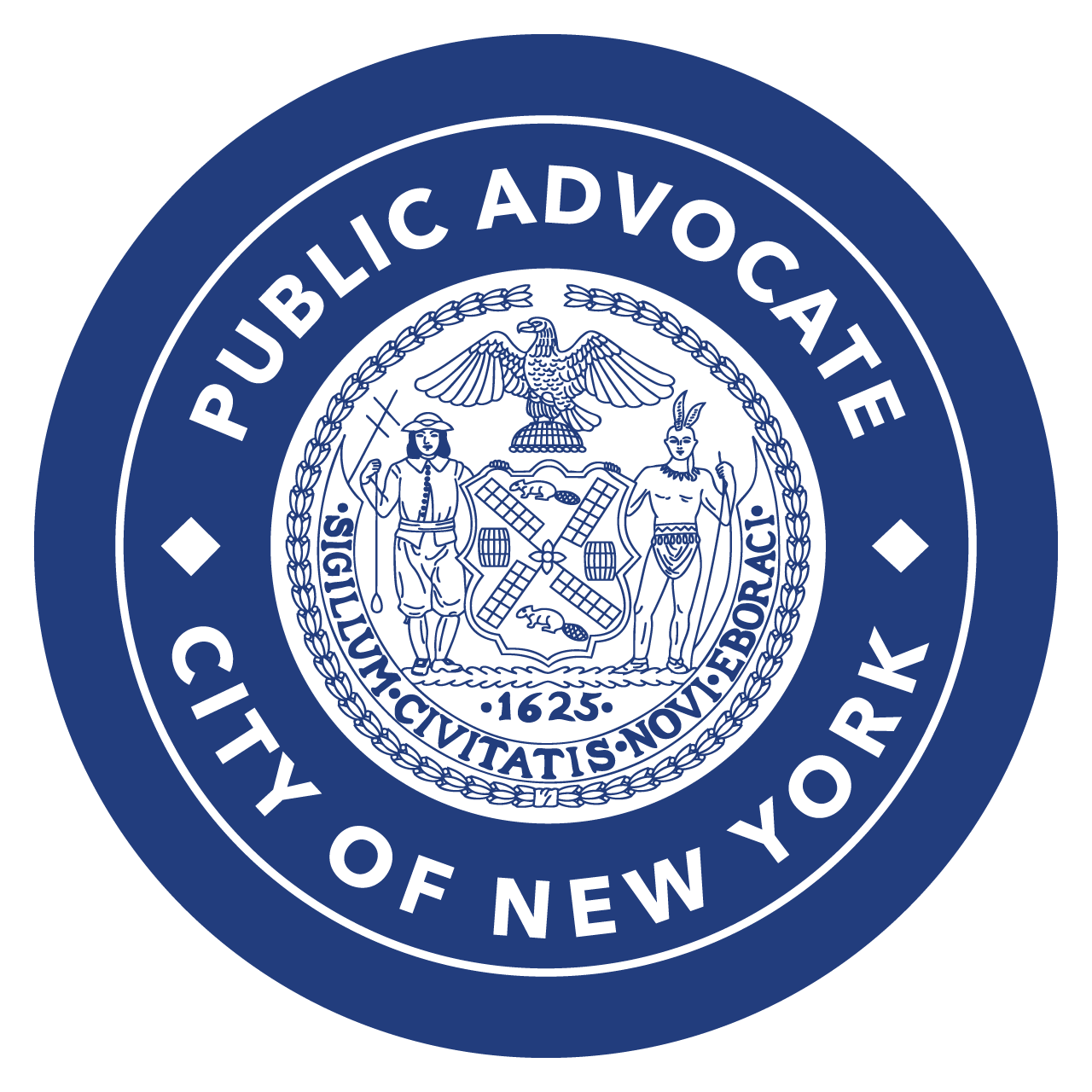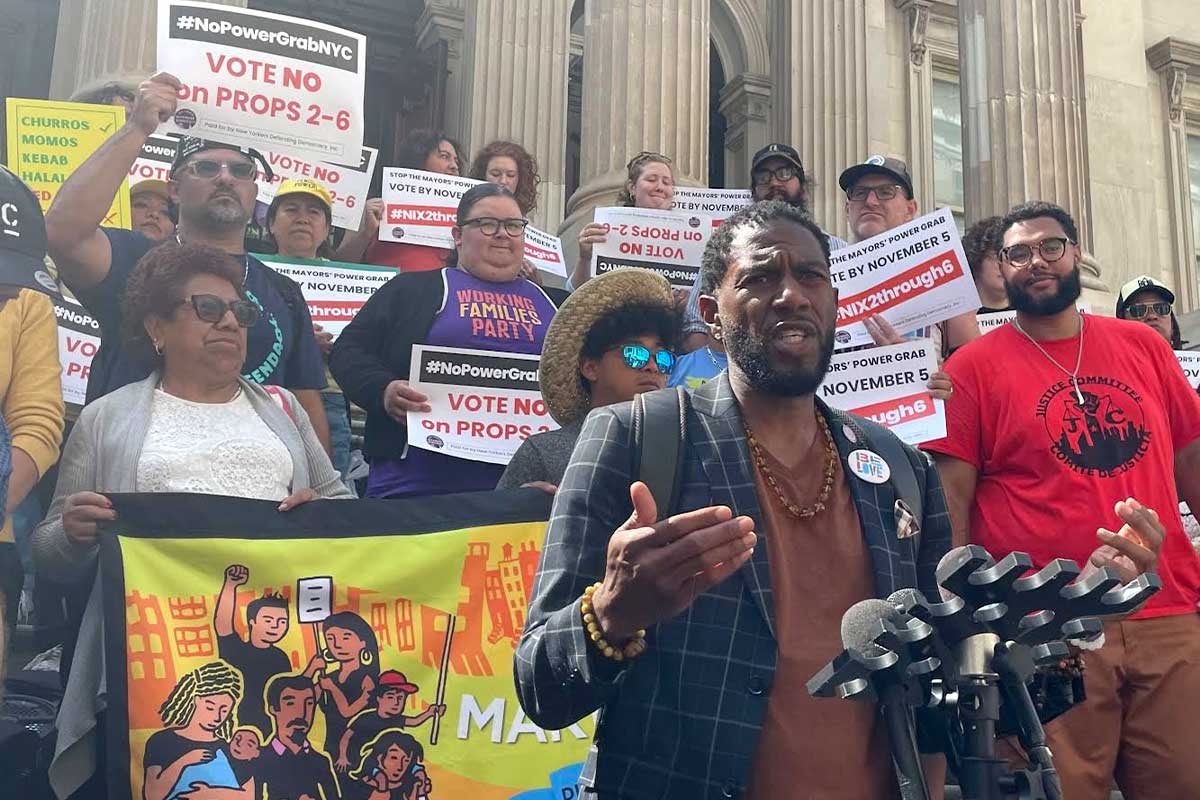
Learn About 2024 Ballot Proposals
Know Before You VoteLatest
Press
October 21st, 2024Press Release
NYC PUBLIC ADVOCATE’S STATEMENT ON ‘CITY OF YES’ HOUSING PROPOSAL
As the City Council deliberates on the Adams administration’s ‘City of Yes for Housing Opportunity’ proposal, New York City Public Advocate Jumaane D. Williams made the following statement on the plan, highlighting both the positive intentions of City of Yes and several areas of concern, where he believes changes to the framework would prevent potential negative impact and unnecessary challenges.
The Public Advocate spoke about the proposal at City Hall today as it was considered by the Council’s Subcommittee on Zoning and Franchises. His statement on the plan is below, and video of his comments at the hearing is available here.
“I want to start off with some questions I normally ask people all across the city:
How many people think housing and homelessness are the number one or number two issue? Everybody raises their hand.
How many people think the answer is housing at a price point people can afford? Everybody raises their hand.
And how many people would like to live next to a taller building? And no one raises their hand.
Those questions are answered the same anywhere I go in the city, across socioeconomics, race, religion, political affiliation. Which I always use to show – we sometimes know what the answer is, but it’s still difficult to still get it done, and I think it’s up to us to walk people through it.
Although the City of Yes for Housing Opportunity is the right lens to try and build a framing, and it’s well-intentioned, there are a number of challenges and potential negative impacts that include possible gentrification and the risk of this proposal not producing a lot of affordable housing units. Some things I wanted to highlight include:
Gentrification Risk: When market rate housing units are built and rented at higher rates than current residents pay, property values can rise causing displacement of existing residents. We know we need some market rate housing, but we need affordability as well. Whether through the increase in property taxes for longtime residents forcing people to sell their homes, often to developers exacerbating the issue, or through a rise in rents as property values rise, if there are no preventative measures in place, vulnerable communities can be pushed out and it is critical to understand the long-term impacts and whether there are risks of racial and ethnic displacement. How does the City of Yes comply with Local Law 78 of 2021? How does the administration plan to address and mitigate heightened risk of displacement from tax increases or management companies taking advantage of an already overburdened rental market?
Lack of Affordable Units: While the plan emphasizes affordable housing, it does not guarantee any number of truly affordable units. Currently, this does not require Universal Affordability Preference (UAP) and lacks any regulatory system – it may be adhered to, but I want to make more of it mandatory. This was one of the problems I had with Mandatory Inclusionary Housing – a lot of it wasn’t mandatory, particularly the lower income. Stronger enforcement mechanisms are needed to ensure deep affordability so that developers are not prioritizing building luxury housing. The same applies to residential conversions. How will this proposal guarantee deep affordability?
As for recommendations, I want to highlight the following:
Affordability Guarantees: The administration should strengthen UAP enforcement to ensure a significant percentage of units are guaranteed to be and remain affordable. Another option would be to extend rent regulations to protect existing tenants from evictions where rents are exorbitantly and inexplicably increased making someone’s dwelling unaffordable from one minute to the next.
Tenant Protections: No proposal centered around affordable housing can be truly authentic without other key protections in place for residents of the city. Increasing tenant protections through the proper funding of right to counsel legislation, as well as exploring aspects of universal rent control, tenant purchasing options and expanding voucher subsidies should not be excluded from this conversation. Further, we should dig deeper into the tens of thousands of rent-stabilized apartments currently not counted in the 1.4% vacancy rate that has been the cornerstone of this proposal. I'm sure we can find a little more housing in every neighborhood if we count those. I urge you to consider a parallel pathway to strengthening housing rights alongside access to affordable housing.
Infrastructure Investments: Increased housing density will burden existing infrastructure, including transportation, schools, and healthcare facilities. The administration must plan on funding infrastructure improvements alongside housing development that will strengthen and improve quality of life.
Removing Parking Mandates: Eliminating mandates in public transportation deserts will be harmful to many neighborhoods. If this proposal were to move forward, I urge that it be limited to areas within a half-mile of a railroad or subway station. There are some areas that definitely need the parking, and we may want to talk about some municipal parking program that utilizes a multi-tiered, need-based assessment of areas where public transportation is inaccessible and in high density areas where prioritizing low-income commuting to these high volume areas where parking is limited, because every place doesn't have the kind of access to parking that other folks would have.
Community Engagement: We want to make sure communities are engaged early and often, giving them a chance to really be heard. It is important that communities are engaged early on and that concerns are explained and addressed. Educating, collaborating, and communicating with residents, community boards, and local organizations is crucial.
Sustainable Design: An increase in construction and population density will strain natural resources and contribute to pollution. To prevent this, the plan should incorporate sustainable practices that promote green buildings, energy efficiency, and open spaces.
Faith Based Development: While the city does not have a detailed description of the ways faith based organizations can develop their land, it is important that houses of worship be protected from predatory practices, as well as prioritized for engagement to develop supportive housing partnerships. A structure is needed that can extend housing opportunities for organizations that are limited by current zoning restrictions
Lastly, I really want to make sure that the public sees what the City Council is doing, which is really important – really taking the feedback folks have been hearing, really having an opportunity to hopefully adjust the City of Yes plan right now to address many of the concerns that we have heard and will continue to hear, because people are really concerned.
I know if we looked the way we did 100 years ago, we wouldn’t be here now. We were able to look this way because of building up, and because of our subway system. If we look the same way in 100 years, we will have failed our children’s children – there’s no way around it. We have to do this, but we have to do it correctly. The way I’ve put it is if we preserve some areas of the fabric of the neighborhood, we can ask the neighborhood to give up some density – but we do want to make sure if they’re giving it up, they’re actually getting the housing the city needs.
From today’s hearing, I hope to hear updates from the administration regarding the City of Yes including clear proposals on the amount of affordable housing guaranteed. I hope to learn more from advocates, residents, and developers about their recommendations. I hope we can all work together to ensure that real affordability is prioritized throughout the entire process. We must adequately invest and support New Yorkers who deserve fair housing and opportunities. Let’s do what we can for the people who most need it.”

Get Help!
The Office of the Public Advocate assists with complaints and inquiries involving government-related services and regulations. From resolving housing complaints to combating abuse by agencies, the Office helps thousands of New Yorkers annually by improving transparency and accountability of City government.


